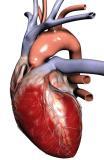Health Topics
-
Healthy Living
-
|
| |
| Heart Valves: Keeping the Doorways Healthy |
| Dr Manoj Kumar Daga
|
| |
 |
Our heart valves are rightly called the doors of life. There are four of them, each at the entrance and exit of the upper and lower chambers of the heart. Their main function is to control the unidirectional flow of blood through the heart. It is the opening and closing of these valves that cause the normal heart to sound ‘lub dup’. |
|
Like all the other organs of the body, the heart valves too are susceptible to diseases, both congenital (present from birth) and acquired. Earlier valve diseases had hardly any treatment and patients were compelled to lead a very poor quality of life and succumb to death early. But now, we have moved miles ahead, and even those with very complex valve disorders can enjoy a near-normal life.
|
Valve
|
Nature
|
Function
|
|
Tricuspid
|
Tricuspid
(having three cusps)
|
Controls the flow of blood from right atrium to the right ventricle
|
|
Pulmonic
|
Bicuspid
(having two cusps)
|
Controls the flow of blood in between the right ventricle and the pulmonary artery
|
|
Mitral
|
Bicuspid
|
Controls the flow of blood between the left atrium and the left ventricle
|
|
Aortic
|
Tricuspid
|
Controls the flow of blood from the left ventricle to the aorta
|
|
| |
Rheumatic fever
In our country, rheumatic fever is one of the principal causative factors for valve disorders. Initially, it manifests as throat infection, pain in the joints that keeps on shifting, and fever. If improperly treated, rheumatic fever affects the delicate heart valves, causing them to be narrowed or to leak. Since it is most commonly seen among people from weaker socio-economic groups, the awareness level about early treatment of rheumatic fever is low, and often, young adults in their teens come down with valve disorders. Rheumatic fever can be effectively treated by long-term use of penicillin injection. But if valves are already affected, then appropriate treatment is necessary.
Congenital defects
Sometimes, children may be born with improperly formed valves that are very tight or leaky. The valves may even be completely absent, sometimes.
Other acquired defects
Sometimes, abnormal deposits of calcium occur on the valve cusps, leading to their deformity. Presence of blood clots, infective pathogen-like a mass of fungus, bacteria etc, or even external mechanical injury may cause damage to heart valves. Some medications like prolonged use of antimigraine drugs, radiation treatment to chest area etc. can also precipitate valve damage.
Valve disorders
Valve disorders are mainly two types: valve narrowing (stenosis) and valve leakage (regurgitation). Irrespective of which valve is affected, most valve defects produce similar symptoms that are directly proportional to the severity of the defect, the person’s activity level and general health. Valve disorders may manifest as:
- Shortness of breath that progressively increases with exertion in the initial stages, and later, even at rest
- Chest pain
- Swelling of the legs, especially the ankles
- Heart palpitations or rapid heart beat
- Easy fatigue
- Repeated chest infections
- Severe cough, sometimes coughing up blood
Diagnosis
Basing on the patient’s history, the doctor can suspect a valve disorder. On clinical examination, he/she may hear abnormal heart sounds called ‘murmurs’. This prompts the doctor to refer the patient to a cardiologist for detailed examination. An Echocardiogram with Colour Doppler reveals the nature and exact extent of the disease with the amount of blood flowing across the valves. A chest X ray and ECG is also done. Rarely, an angiogram is required for associated problems.
Treatment intervention
Once diagnosed, the cardiologist discusses the treatment options. Most cases of valve narrowing can be treated without surgery through Balloon Valvoplasty, where the narrowed valve is widened by wiring a balloon through a large blood vessel. Since it is non surgical, it leaves no scar and patients are discharged within two to three days, and can resume normal life almost immediately. Some precautionary medications are advised to prevent further infliction to the valves. |
| |
|
|
| |
|